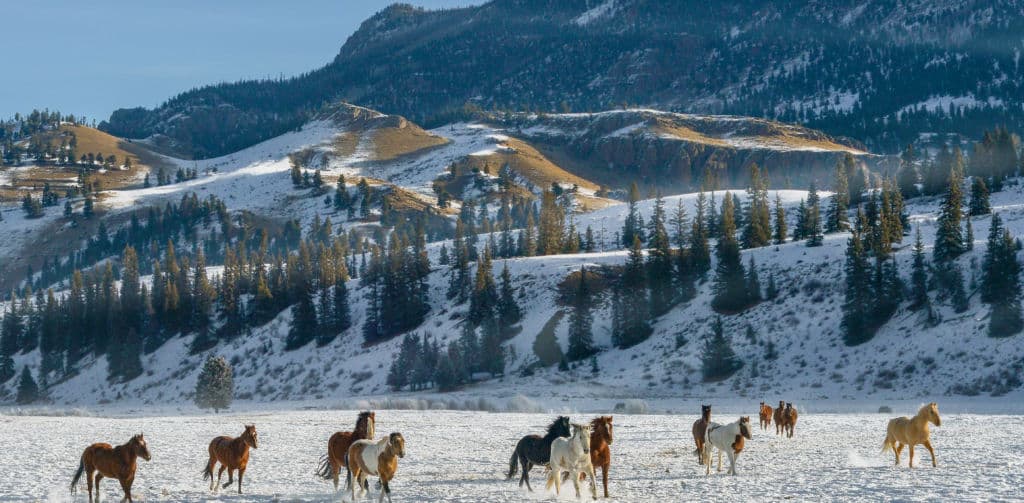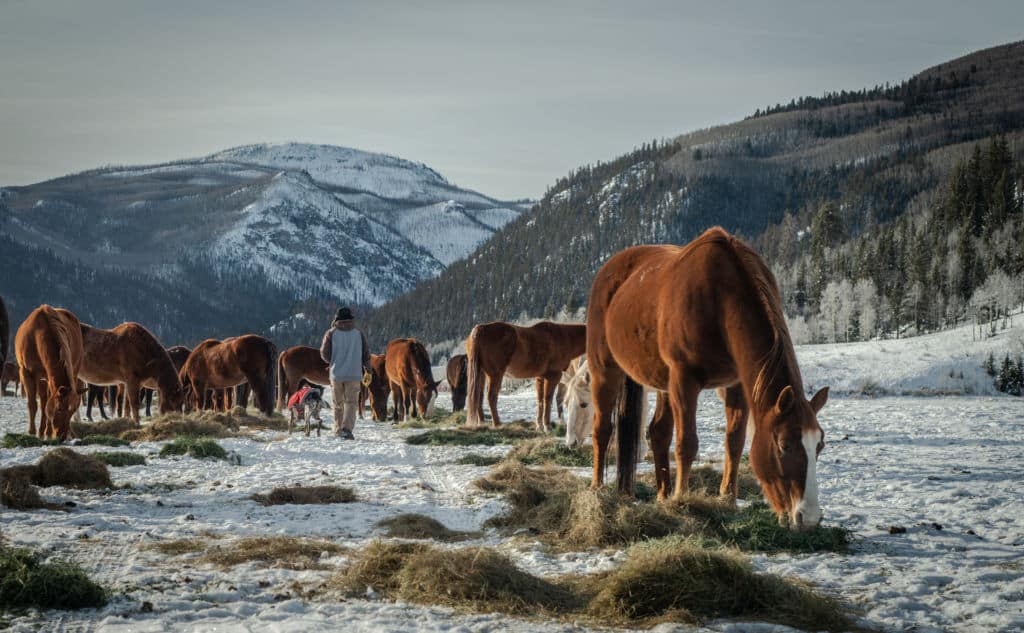
Year after year we receive the question of “What do you do with the horses during the winter?” Well besides playing intense games of speed chess, they stay out in the pastures and are a critical part of the work day at the 4UR! Here’s how the day goes: every
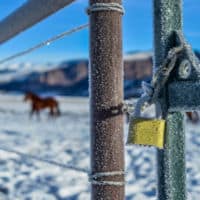
morning our hay truck leaves the barn, filled with a pre-determined mix of hay and alfalfa. The truck will make its way up station road, from there, a number of pastures can be chosen as the feeding point for that day. The objective is to spread out the feeding areas and not over abuse a specific part of the pastures regularly. This helps in providing the ground with nutrients in the spring. As the horses eat, their manure is left on the frozen ground where it will thaw in the spring and is then harrowed into the pastures to promote growth for next year’s hay crop. This perpetuates the process so it can sustain itself over and over again.
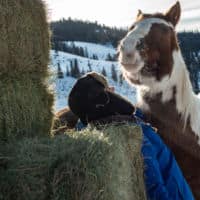
The horses themselves will be well taken care of even though they may be out in the pasture. Horses are an amazing animal and have some pretty extraordinary features to allow them to thrive in colder environments. One of the most interesting features is the fact that horses will grow a winter coat. This is caused by the decrease in sunlight throughout the day, not the temperature. As light becomes less available, horses begin to grow winter coats which are very noticeably longer than their summer attire. Furthermore, the thick long hair leaves pockets of air in their coat that stay warm and help maintain proper body temperature.
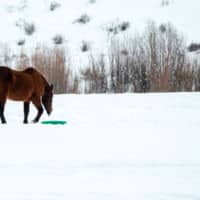
Additionally, the right combination of protein and fiber through proper diet goes a long way in terms of internal body temperature. All of our hay, and alfalfa goes through protein tests each year before feeding to analyze the protein content in each batch of crop we use to feed them. After all the data is collected, a feeding plan will then be written to ensure the proper distribution of nutrients throughout the winter months. Although it may be hard to predict weather and formulate a plan well in advance of the winter, it holds up pretty well during the winter months. Its always easy for us to make quick adjustments to ensure the horses have proper diet. To further supplement the diet of our horses, we routinely place mineral buckets in the pasture. Mineral buckets are able to provide horses with essential minerals and vitamins to aid in homeostasis. Minerals found in these buckets include: protein, magnesium, fats, fiber, potassium and iron to name a few. It works similar to a salt block, all the horse has to do is lick it and voila.
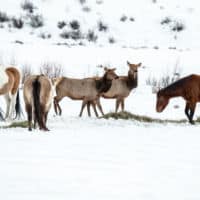
Another animal we must deal with are Elk; while we do love them, they can infringe upon the herd’s feeding. If the line of feed is distributed too loosely, it leaves gaps for Elk to come down and eat the feed. If the feed is spread too tightly, not all horses have an opportunity to get their fill. Despite how loose or how tight we spread the feed, there still always seems to be an elk or two that sneaks their way in. To solve this issue, there are special noise making shotgun shells that can be fired into the air to scare the Elk away. This is just another simple method to ensure the horses receive the proper feed amounts during their winter vacation.
Now with all this in mind, the last question is water! The simple answer is Goose Creek! Although a large part of the creek is frozen, there’s plenty of open water accessible to the horses! Even though some mornings it can be crisp and your nostrils freeze in a matter of seconds, seeing 50 happy horses running through the snow towards you each morning does the soul plenty of good.
